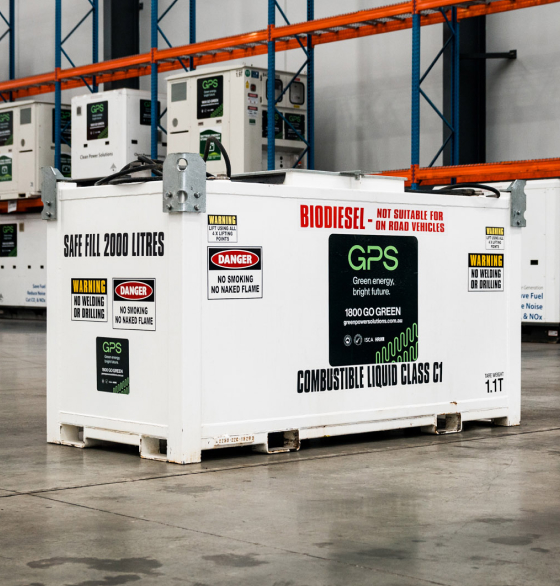For any business relying on heavy machinery, vehicle fleets, or extensive logistics, from bustling construction sites to sprawling farms, fuel is the lifeblood of your operation. It keeps your machinery operational and your projects on schedule. Yet, your fuel storage strategy could be either a vital asset or a hidden drain on your bottom line.
A neglected or poorly chosen fuel tank often becomes a significant liability, leading to contaminated fuel, costly equipment breakdowns, environmental hazards, and hefty regulatory fines. Indeed, industry data indicates a substantial percentage of operational disruptions and financial penalties stem from inadequate fuel storage. True efficiency extends beyond merely ordering fuel; it’s fundamentally about safeguarding your supply. A smart investment in your fuel storage solution guarantees a clean, reliable supply, safeguards your assets, and directly boosts profitability. While this represents an upfront commitment, it is a preventative measure that safeguards against far greater potential expenses in the long run.
This guide is your roadmap to mastering fuel storage. We’ll cover everything from choosing the right tank and navigating compliance to best practices in maintenance and the cutting-edge technology that puts you in control.
Choosing Your Fuel Storage Tank
The primary decision revolves around your tank’s placement, which significantly impacts cost, maintenance requirements, and land utilisation. Let’s explore the options.
Above-Ground Storage Tanks (ASTs): The Flexible Workhorse
- The Advantages: ASTs typically offer faster and more affordable installation. Inspections are straightforward; you can easily walk around them to check for leaks or corrosion. This visibility makes them ideal for immediate issue detection. Double-walled models provide excellent built-in containment.
- The Disadvantages: They are exposed to the elements and potential damage or vandalism. They also take up valuable surface space, a key consideration for smaller properties.
- Best For: Operations that need flexibility and have ample space, like farms, construction projects, and fleet depots, as their ease of installation and immediate leak detection suits dynamic or evolving sites.
Underground Storage Tanks (USTs): The Permanent Solution
- The Advantages: USTs are the ultimate space-saver and are protected from the elements. The surrounding earth provides natural insulation, helping maintain stable fuel temperatures. They offer a cleaner, more discreet aesthetic.
- The Disadvantages: Installation is a major project; it’s complex, expensive, and requires significant excavation. Inspections and repairs are tougher and pricier. They are also subject to extremely strict environmental regulations to prevent groundwater contamination from undetected leaks.
- Best For: High-volume, permanent facilities like retail petrol stations and large fleet hubs where space is at a premium and a long-term, unobtrusive investment makes sense, as they offer superior space saving and protection from surface damage.
Beyond placement, you’ll choose between durable steel (which requires anti-corrosion measures) and rust-proof fibreglass. Your final decision balances fuel volume, site, budget, and local regulations.
Understanding Fuel Tank Regulations
Navigating fuel storage regulations isn’t optional; it’s crucial for protecting your business and the environment. Getting compliance right from day one is the smartest move you can make. While rules vary between states and territories in Australia, most authorities, including the EPA (Environmental Protection Authority) in each state, mandate these key protections:
- Spill Prevention: Your system needs robust tools like overfill alarms, automatic shut-off devices, and spill buckets to catch drips during delivery.
Secondary Containment: This is your fail-safe. Double-walled tanks or surrounding bunds (dikes) are designed to capture any leak from the primary tank before it escapes into the environment. - Corrosion Protection: To prevent rust and leaks, your tank and piping must either be made of a non-corrosive material (like fibreglass) or have a protective coating and a cathodic protection system.
- Leak Detection: Effective leak detection is paramount; you simply cannot address a problem you’re unaware of. Continuous monitoring systems, like Automatic Tank Gauging (ATG), are essential for catching leaks the moment they start.
- Meticulous Record-Keeping: Keep detailed logs of everything: installations, inspections, maintenance, and fuel deliveries. These records are your proof of compliance during an audit.
Expert Recommendation: Always consult your local fire authority and environmental agency before installation. They are your best resource for ensuring your plan meets every relevant code and Australian Standard.
Best Practices for Fuel Storage and Maintenance
A top-tier tank is only as good as its maintenance routine. Proactive care is the key to preventing contamination, extending your system’s lifespan, and avoiding costly operational shutdowns. Proactive care isn’t just about preventing breakdowns; it can lead to tangible savings by reducing fuel waste, avoiding costly emergency repairs, and potentially lowering insurance premiums.
- Conduct Weekly Walk-Arounds: Make it a habit. Look for rust, peeling paint, or leaks on the tank, pipes, and dispensers. Test your alarms and check that spill buckets are clean.
- Keep Water Out: Water is your fuel’s worst enemy. It promotes microbial growth (often referred to as ‘diesel bugs’) that clogs filters and damages engines. Regularly check for and drain water from the tank bottom, and use fuel filters with water separators.
- Secure Your Asset: Fuel is valuable. Install your tank in a well-lit area, use high-quality locks, and consider security fencing and cameras to deter theft and vandalism.
- Ensure Fuel Quality: Use a “first-in, first-out” policy to keep fuel fresh. For fuel stored long-term, especially in humid climates, use biocides and stability additives. Regular fuel sampling is a great way to spot problems early.
Leak Detection Technology for Fuel Tanks
Modern technology offers 24/7 peace of mind. These systems go beyond manual checks to provide real-time protection, minimising risk, avoiding costly penalties, and ultimately saving you money.
- Automatic Tank Gauging (ATG) Systems: These systems are effectively the central intelligence of your fuel system. ATGs use probes to constantly monitor fuel levels, temperature, and water. They run automatic leak tests and will instantly alert you to any sudden volume drop, providing vital early warning that can prevent catastrophic leaks, significant environmental damage, and hefty fines.
- Interstitial Monitoring: For any double-walled tank, this is a must-have. Sensors sit in the space between the inner and outer walls and will trigger an alarm if either wall is breached, preventing a leak from ever reaching the soil or groundwater.
- Sump and Dispenser Sensors: These sensors are placed in containment areas under your tank and dispensers to detect any leaks from pipes or fittings, providing another critical layer of defence.
- Vapour Monitoring: Primarily used for USTs, vapour monitoring systems detect hydrocarbon vapours in the soil around the tank and piping. An increase in vapour levels can indicate a leak, even before liquid fuel escapes.
The Next Generation Fuel Storage
The fuel storage industry is rapidly evolving, driven by the demand for greater efficiency, safety, and sustainability.
- IoT and Smart Tanks: The Internet of Things (IoT) has transformed fuel management. Smart tanks with integrated ATGs connect to the cloud, allowing you to monitor fuel levels, track consumption, and receive alerts on your phone or computer from anywhere. This data can integrate with fleet management software to automate fuel ordering and optimise deliveries, enhancing fuel tank monitoring capabilities significantly.
- Next-Gen Materials: Research is paving the way for advanced composites and coatings that offer superior strength, longer lifespans, and better resistance to modern biofuels.
- Adapting to New Fuels: As the world looks to alternative energy, tank designs are already adapting to safely store biofuels, synthetic fuels, and emerging energy carriers like hydrogen.
Maximising Your Fuel Storage Investment
Choosing, installing, and maintaining a fuel storage tank is a major responsibility, but it’s also a powerful strategic opportunity. When you choose the right tank, commit to compliance and maintenance, and leverage modern technology, you’re not just storing fuel. You are building a foundation for operational excellence, protecting your equipment, and securing the long-term success of your business.
Ready to build a smarter, safer, and more efficient fuel infrastructure? Contact our experts today. We’ll help you navigate the options and design a solution that powers your success for years to come.

